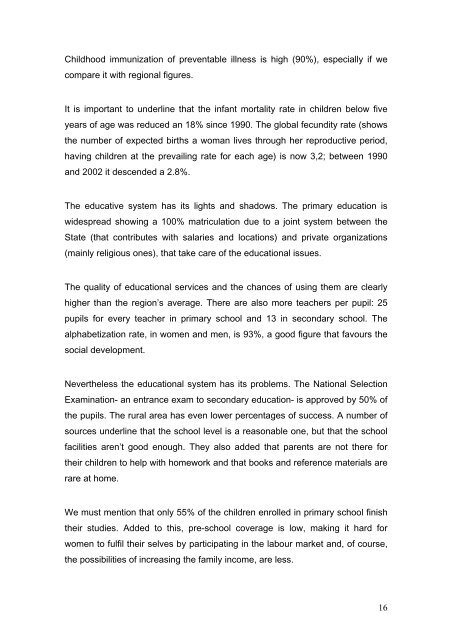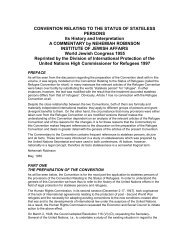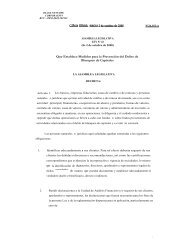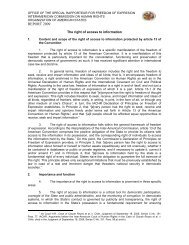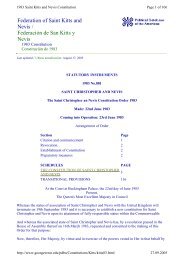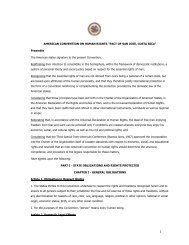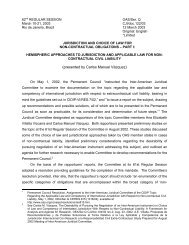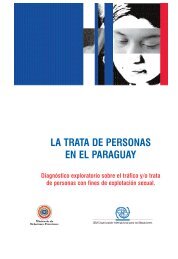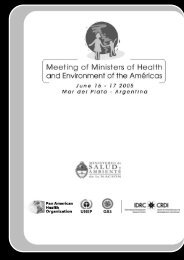TRAFFICKING OF PERSONS IN BELIZE - OAS
TRAFFICKING OF PERSONS IN BELIZE - OAS
TRAFFICKING OF PERSONS IN BELIZE - OAS
You also want an ePaper? Increase the reach of your titles
YUMPU automatically turns print PDFs into web optimized ePapers that Google loves.
Childhood immunization of preventable illness is high (90%), especially if we<br />
compare it with regional figures.<br />
It is important to underline that the infant mortality rate in children below five<br />
years of age was reduced an 18% since 1990. The global fecundity rate (shows<br />
the number of expected births a woman lives through her reproductive period,<br />
having children at the prevailing rate for each age) is now 3,2; between 1990<br />
and 2002 it descended a 2.8%.<br />
The educative system has its lights and shadows. The primary education is<br />
widespread showing a 100% matriculation due to a joint system between the<br />
State (that contributes with salaries and locations) and private organizations<br />
(mainly religious ones), that take care of the educational issues.<br />
The quality of educational services and the chances of using them are clearly<br />
higher than the region’s average. There are also more teachers per pupil: 25<br />
pupils for every teacher in primary school and 13 in secondary school. The<br />
alphabetization rate, in women and men, is 93%, a good figure that favours the<br />
social development.<br />
Nevertheless the educational system has its problems. The National Selection<br />
Examination- an entrance exam to secondary education- is approved by 50% of<br />
the pupils. The rural area has even lower percentages of success. A number of<br />
sources underline that the school level is a reasonable one, but that the school<br />
facilities aren’t good enough. They also added that parents are not there for<br />
their children to help with homework and that books and reference materials are<br />
rare at home.<br />
We must mention that only 55% of the children enrolled in primary school finish<br />
their studies. Added to this, pre-school coverage is low, making it hard for<br />
women to fulfil their selves by participating in the labour market and, of course,<br />
the possibilities of increasing the family income, are less.<br />
16


